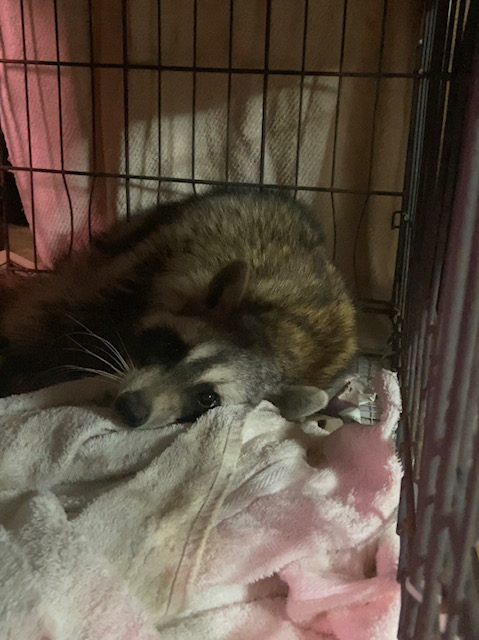Foxes: Elegance and Cunning in the Wild
Identification: Foxes, members of the Canidae family, are charismatic mammals celebrated for their bushy tails, pointed ears, and slender bodies. Diverse species of foxes inhabit a wide range of ecosystems, showcasing variations in size, coat color, and markings. Their iconic features and keen intelligence make foxes a symbol of adaptability in the wild.
Lifespan: In the wild, the lifespan of foxes varies depending on factors such as species, environment, and available resources. On average, foxes live between 3 to 4 years in the wild. Captive foxes, under optimal conditions, may live longer, with some species reaching up to 14 years.
Diet: Foxes are opportunistic carnivores with a versatile diet that includes small mammals, birds, insects, fruits, and even scavenged food. Their hunting prowess and adaptability enable them to thrive in a variety of habitats, from urban areas to dense forests. Foxes play a crucial role in controlling rodent populations, contributing to ecosystem balance.
Babies (Kits or Pups): Fox babies, known as kits or pups, are born in spring. The number of offspring in a litter can vary, with an average ranging from 3 to 7 pups. Kits are born blind and helpless, relying on their mother’s care and nourishment. As they grow, they develop their characteristic fur and markings.
Behavior: Foxes exhibit a range of behaviors that showcase their intelligence and adaptability:
Baby Porcupines: Tiny Quilled Wonders in Need
Identification: Baby porcupines, scientifically known as Erethizon dorsatum, are enchanting creatures marked by their endearing appearance and distinctive quills. Covered in soft fur and adorned with small, flexible quills, these infants resemble miniature versions of their adult counterparts. As members of the rodent family, porcupines are renowned for their unique defense mechanism—their sharp, barbed quills. . Porcupines are very vocal; they grunt, whine, moan, and click their teeth loudly in “battle chatter.”
Lifespan: In the wild, porcupines have a lifespan of around 5 to 7 years, although some may live up to 10 years. Various factors, including predation, disease, and habitat conditions, influence their longevity. Baby porcupines, vulnerable in their early stages, rely on attentive care to ensure their survival.
Diet: Baby porcupines follow a diet similar to adult porcupines, consisting mainly of tree bark, leaves, twigs, and buds. Their specialized digestive system allows them to efficiently extract nutrients from plant material. As they grow, their diet expands to include a wider variety of vegetation.
Babies: Porcupine babies, also known as porcupettes, are born with soft quills that harden within a few hours. A litter typically consists of one to three porcupettes, born in the spring or early summer. These young porcupines are entirely dependent on their mother’s care, receiving nourishment and protection in the safety of the den.
Behavior: Baby porcupines exhibit behaviors that align with their herbivorous and nocturnal nature:
- Tree Dwellers: Porcupines are skilled climbers, and porcupettes inherit this trait. They often take refuge in trees to escape predators and learn to navigate branches early in life.
- Nocturnal Habits: Like adult porcupines, baby porcupines are primarily nocturnal, venturing out in the cover of darkness to forage for food. This behavior helps them avoid potential threats.
- Quill Defense: While the quills of baby porcupines are softer than those of adults, they still serve as a protective mechanism. When threatened, porcupettes may rattle their quills as a warning or, if necessary, use their quills to deter predators. Porcupines are not aggressive with other species, but if threatened they will turn around, spike up their quills, and shake their tail.
Raccoons Identification: Raccoons (Procyon lotor) are highly adaptable mammals easily recognizable by their distinct markings and dexterous front paws. Characterized by a black “mask” across their eyes and bushy tails adorned with alternating rings, these solitary, nocturnal creatures are well-suited to a variety of environments, including urban landscapes.
Lifespan: In the wild, raccoons typically have a lifespan of 2 to 3 years due to predation, disease, and environmental factors. However, in captivity or under optimal conditions, raccoons may live up to 20 years. Their resilience and ability to thrive in diverse habitats contribute to their survival.
Diet: Raccoons are omnivores with a highly varied diet. Their adaptability allows them to consume fruits, nuts, berries, insects, small mammals, and even human food scraps. Their keen sense of touch, facilitated by their nimble front paws, makes them adept at manipulating objects and extracting food.
Babies (Kits): Raccoon babies, known as kits, are born in late spring to early summer. A female raccoon typically gives birth to a litter of 3 to 5 kits. The kits are initially blind and rely on their mother for warmth and nourishment. As they grow, their mother imparts essential survival skills, including foraging and climbing.
Behavior: Raccoons exhibit a range of behaviors that contribute to their adaptability and survival:
- Nocturnal Nature: Raccoons are primarily nocturnal, meaning they are most active during the night. Their excellent night vision and heightened sense of hearing make them well-suited for navigating in low-light conditions.
- Clever Problem-Solvers: Raccoons are renowned for their problem-solving abilities. Their intelligence and curiosity often lead them to explore and manipulate objects to obtain food, earning them a reputation for being resourceful scavengers.
- Social Structure: While raccoons are generally solitary creatures, they may form loose-knit groups, especially during mating season or when sharing resources. However, mothers and their kits maintain close bonds, and families may share a den.

. Armadillos: Marvels of Nature’s Armor
Identification: Armadillos are unique mammals known for their distinctive armor-like shell, composed of bony plates covered by tough, leathery skin. With a distinct appearance resembling a mini-tank, these creatures belong to the family Dasypodidae. Armadillos are primarily found in the Americas and iconic Texas critters. They are very near-sighted; if you startle one, armadillos leap straight up into the air. Rarely, they can carry leprosy.
Lifespan: In the wild, armadillos typically have a lifespan of 4 to 7 years. Their longevity is influenced by factors such as predation, habitat conditions, and exposure to diseases. Armadillos are opportunistic survivors, adapting to a diverse array of environments, from grasslands to forests.
Diet: Armadillos are omnivores with a varied diet that includes insects, larvae, small vertebrates, and plant matter. Their strong sense of smell and sharp claws aid in foraging for food, particularly insects like ants and termites. Despite their tough exterior, armadillos are skilled diggers, unearthing food sources with precision.
Babies (Pups): Armadillo pups are born in litters, usually consisting of 4 identical quadruplets. The development of the armored shell begins shortly after birth, providing them with a degree of protection even as infants. Armadillo mothers are attentive caregivers, and the pups stay close to their mother for several months as they learn essential survival skills.
Behavior: Armadillos exhibit fascinating behaviors that contribute to their adaptability:
- Digging Expertise: Armadillos are proficient diggers, using their strong claws to create burrows for shelter and hunting. They often create multiple burrows within their territory and are known to retreat into these tunnels when threatened.
- Solitary Nature: Armadillos are typically solitary animals, venturing out alone in search of food. However, some species may tolerate the presence of others, particularly during the mating season. Their nocturnal habits help them avoid predators and excessive heat.
- Self-Defense Mechanism: When threatened, armadillos demonstrate a unique defensive behavior: they can jump vertically and startle potential predators. Their protective shell, while effective against many threats, does not make them immune to all predators.
Ringtail Cats: The Enchanting Masked Marvels
Identification: Ringtail cats (Bassariscus astutus) are captivating mammals known for their unique appearance and striking facial markings. Recognized by their bushy tails banded with dark rings, these small carnivores belong to the raccoon family, Procyonidae. Their large, expressive eyes and pointed ears add to their charming and mysterious allure.
Lifespan: In the wild, ringtail cats have a lifespan of approximately 7 to 9 years. Their longevity is influenced by various factors, including predation, habitat conditions, and overall health. These agile and adaptable creatures are often found in diverse ecosystems, from arid deserts to rocky canyons.
Diet: Ringtail cats are opportunistic omnivores, displaying a diverse diet that includes small mammals, birds, insects, fruits, and vegetation. Their sharp claws and keen sense of smell make them skilled hunters and foragers. Their ability to consume a variety of foods contributes to their survival in a range of environments.
Babies (Kits): Ringtail cat babies, called kits, are born in litters that typically consist of two to four individuals. Born blind and helpless, kits rely on their mother’s care and nourishment. As they grow, they develop the distinct ringed tail that characterizes the species. Kits stay close to their mothers, learning essential skills for survival.
Behavior: Ringtail cats exhibit fascinating behaviors that make them well-suited to their environments:
- Nocturnal Habits: Ringtail cats are primarily nocturnal, becoming active during the night to avoid predators and take advantage of cooler temperatures. Their nocturnal lifestyle helps them navigate their habitats with agility.
- Excellent Climbers: Ringtail cats are adept climbers, utilizing their sharp claws and strong hind legs to scale rocks, trees, and cliffs. Their climbing skills are essential for hunting, escaping predators, and seeking shelter in elevated locations.
- Territorial Nature: Ringtail cats are territorial animals, marking their territories with scent glands located on their cheeks and paws. They communicate through vocalizations and may establish dens in rock crevices or tree hollows.
